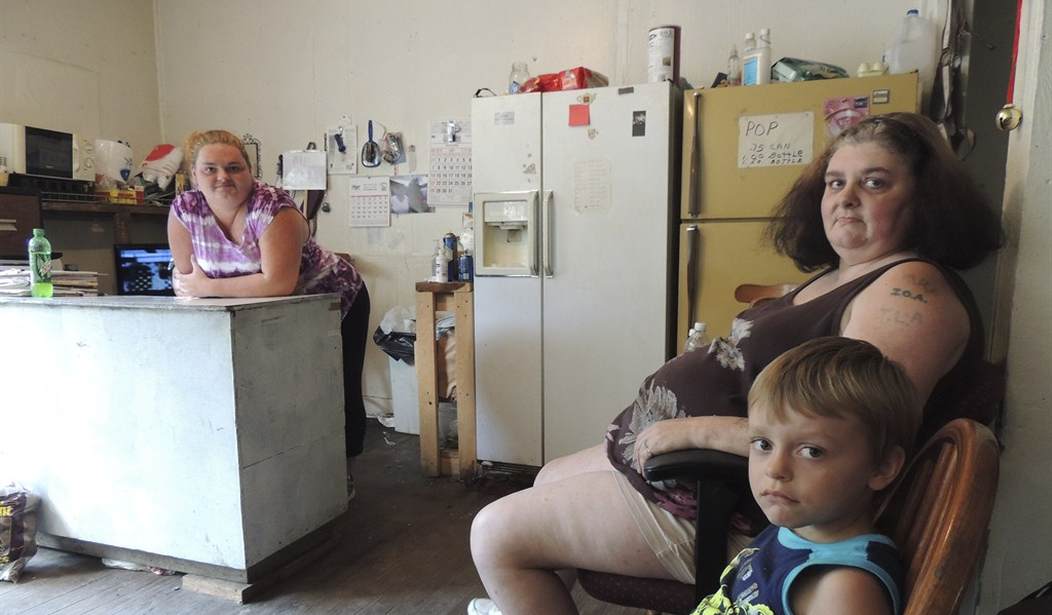If government anti-poverty programs focused on individual outcomes, the results would be those like Lance from Michigan. His father on death row and his mother a prostitute, Lance wandered into Florida and lived behind a dumpster at a 7-11. Hungry, dirty and homeless, he later found a place to live, became sober, got a job and will go to college on a scholarship. We don’t hear stories like that attributed to government assistance.
That is because there are over 90 government welfare programs ranging from cash payments to housing and nutrition that are projected to cost $14 trillion over the next decade. There are so many programs that policymakers cannot even agree on a precise number. Impossible to measure outcomes coherently, this complicated web of spending is a mystery in terms of effectiveness. Here is something that can be measured: so-called “deep-poverty,” or those making less than 50 percent of the poverty level, is at record highs according to the U.S. House Budget Committee.
Welfare reform is urgent if our nation is to see more stories like Lance’s and less statistics that suggest long-term economic decline and mission failure. The last major overhaul of welfare occurred in 1996, replacing Aid to Families with Dependent Children with Temporary Assistance for Needy Families. Among its major provisions was imposing a time limit on benefits and a work requirement. Before that it was Lyndon Johnson’s War on Poverty 50 years ago that created the foundation for the modern welfare state. President Bill Clinton famously said in 1996 that “we are ending welfare as we know it.” Yet through the decades we’ve only tinkered with the welfare state as we know it.
Recommended
The programs must be consolidated and coordinated. Someone like Lance, who was at the bottom of those considered in the throes of deep poverty, is not going to seek out and understand 24 education and job training programs scattered among seven different federal departments and agencies. Moreover, front line workers are trained in following bureaucratic procedures, not developing life-changing solutions based on individual needs and circumstances.
Reform these programs from a system-wide perspective. It is critical to identify barriers to employment including substance abuse, health issues, education, homelessness and poverty itself. The current stove-piped approach makes no sense. In school we learned about Maslow’s Hierarchy of Needs. At the bottom of the pyramid are food and water and realizing one’s full potential is reached at the top after successive needs are met. When someone is hungry they are thinking about their next meal not job training. When someone is addicted to drugs they are thinking about how to get high not food. The types of assistance these people need are inextricably linked, and their lives will remain broken unless all of them are realized.
In this era of record debt and spending, and expected scrutiny on federal budgets, there must be a return on investment. That will remain unknown unless officials develop consistent metrics around core programs. How many people find solutions to housing, hunger, employment and substance abuse? Determine which programs are effective and which ones are not. Replace bureaucratic jargon with meaningful information so elected officials can determine what’s going on. For example, Temporary Assistance for Needy Families, which is still lauded for its reforms, is a relic of government-speak. Don’t expect to hear how many people this program helped get a job with data tables entitled, “average monthly number of work-eligible individuals engaged in work activities for sufficient hours for the family to count as meeting the all-families work requirement.”
Finally, we must recognize that government will never be able to do certain things. It is well- documented that poverty grips those who come from broken families the most. The non-profit organization I lead in Southwest Florida enables our residents to develop relationships with others going through similar difficulties. Oftentimes, this becomes the family they never had. I look at my job as being a father figure as much as a CEO of an $11.5 million organization. Washington D.C. or Tallahassee provides no guidance on how to fulfill this role, nor can they.
Our organization does not take a penny from the government. Instead we rely on investors. In a given year, our shelters house 1500 individuals and 75 percent of those secure permanent jobs. They invest to transform lives and make the community stronger. Government programs should be no different. Reforming our nation’s anti-poverty programs must result in more success stories, not more government.


















Join the conversation as a VIP Member